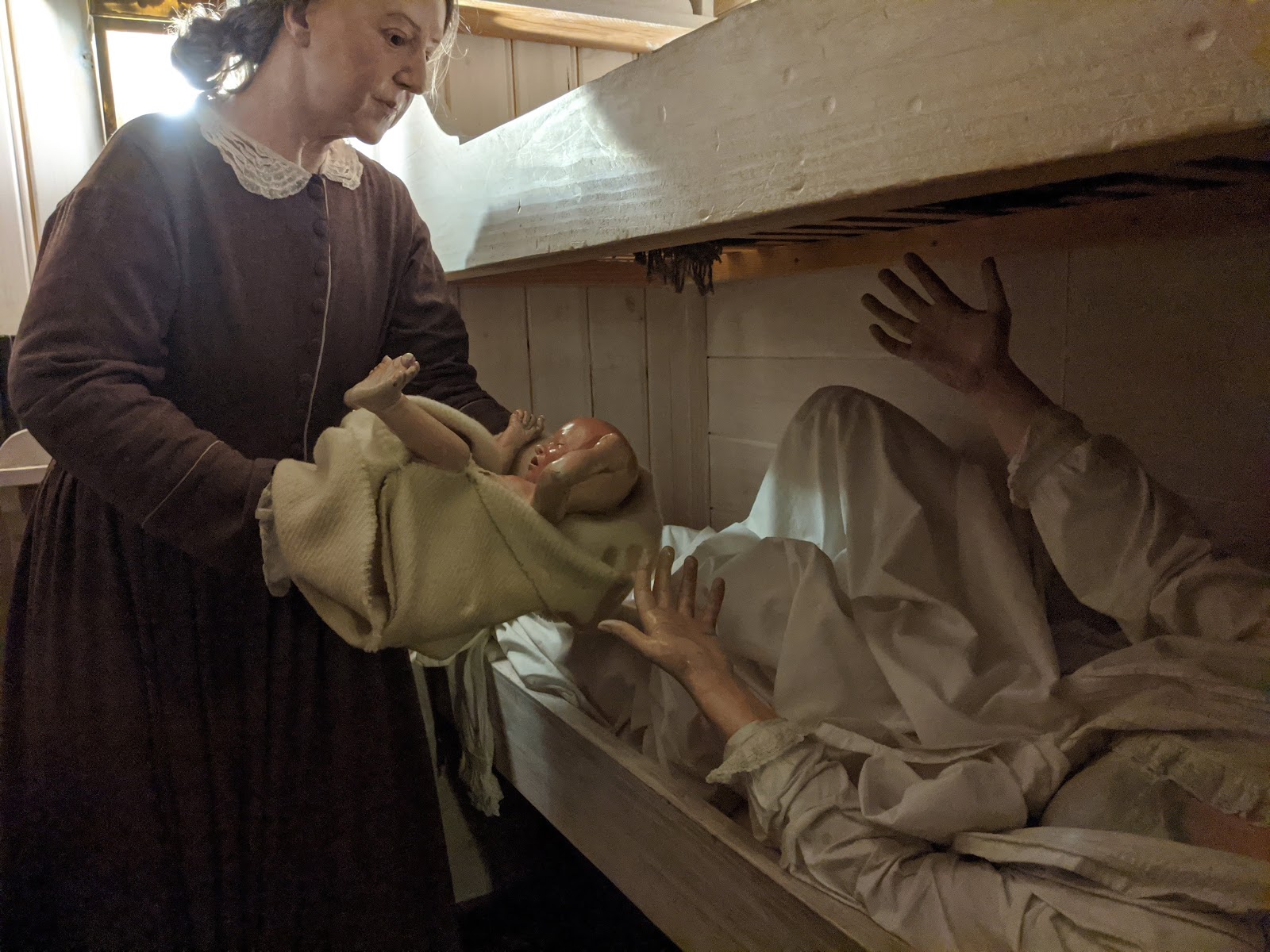Saturday 11th January 2020
Bored on a Friday night in the pub and with a couple of days off work I got to wondering where I could go and what I could visit that would be open at this time of year. Armed with a pint and smartphone I’d soon booked a hotel and a train ticket and on Saturday morning was speeding West towards Bristol on one of Hitachi’s finest. Brunel’s steamship the SS Great Britain my destination. As it was too early to book into the hotel I walked straight from Bristol Temple Meads station to Great Western Dock where the ship lies in dry
As well as the ship itself the dock site contains two museums, a cafe, and of course a gift shop through which you must pass to enter and exit the site. Alas no cloakroom or luggage lockers so I had to leave my bag with the ticket sales staff behind the counter. It was that or drag it round the ship.
Having coughed up my entrance fee of £17, about average for a tourist attraction in the UK I suppose, a guide gives you a quick run down of the site and suggested route to take although you’re not constrained to follow a set path.
First up in a building on the starboard side of the ship is the Being Brunel exhibition. Being Brunel explores the life and legacy of Isambard Kingdom Brunel. This covers the life and achievements of one of the greatest engineers of the 1800s. He built bridges, tunnels, ships and railways that were longer, faster and bigger than anyone before. Brunel was also an innovator, a dreamer, an artist, and frequently a gambler with other people’s (i.e. investors) money. Extraordinary, but also human. He had faults and sometimes failures, but he never gave up.There’s a massive figure of the man dominating the exhibition space with his “trademark” top hat and cigar.
Next come back around the stern of the ship and descend into the dry dock to see the underside of the 322 feet long hull and the great iron propeller - SS Gt. Britain was the first large ocean-going ship to have both an iron hull and a propeller rather than paddle-wheels. Also the first iron ship to cross the Atlantic, it took 14 days.
The iron hull has plenty of rust holes and repairs and the dry dock isn’t that dry despite the glass ceiling around the ship’s waterline so the hull is cocooned in a “blanket” of warm dry air (as dry as a desert) fed from ducts and nozzles below. This should prevent it rusting away altogether.
Climbing out of the dry dock (or there’s a lift) you then go through the Dockyard Museum. This takes you back in a reverse timeline from the 1970 salvage operation and return to Bristol, through two world wars, the ships conversion into a sail-powered “Windjammer” cargo ship, and back to it’s days as a luxury liner.
There’s a huge amount so see here from documents and pictures to machinery such as the propeller lifting gear - the propeller could be lifted out of the water to reduce drag when the ship was under sail.
If you’re the sort of person who likes to dress up in historical costume and have your photo taken you can do that too. I don't, I didn’t.
From the 1st floor of the museum you access the SS Great Britain’s Weather Deck. You get a pretty good view of Bristol’s Floating Harbour from the pointy end of the ship and can wander the whole length and breadth of the deck - even crossing the line on the deck beyond which only first class passengers were permitted and who doesn’t like to cross the line occasionally?
Then you open the door in one of the small deckhouses, duck, and go below to the passenger decks. Unless you’re short you’ll be doing a lot of ducking and minding your head from here on.
The reconstruction of the passenger areas is superb. From the opulent dining saloon, through the first class cabins, doctors, bakers, butchers, and kitchens through to the cramped 3rd class or “steerage” accommodation. All atmospherically lit, populated by life-like mannequins, and with sound effects which  enhance rather than intrude.
enhance rather than intrude.
Better still none of this is cordoned off or behind perspex screens. There are many scenes of life on board as it was in the 19th century and you can get right in amongst it all. It’s one of the best museums I have ever visited. And there’s a fair dose of humour here too, as you’ll find if you try to open certain cabin doors!
Of course it helps that this is a reconstruction so it’s only the ship’s structure that needs to be conserved not the interior but it does make a change from the restrictions found in most historical sites.
They’ve also installed replicas of the two steam engines amidships, which slowly turn, showing how the drive to the propeller shaft was conveyed from the engine via huge wrought iron chains.
And there are the cargo holds, depicting their use as stables for the cavalry when the Great Britain was used as a troopship carrying soldiers to the Crimean War and the Indian Mutiny.
I really enjoyed my visit, helped of course by the fact that being January even on a Saturday afternoon it wasn’t crowded. I might even return at some point as the £17 ticket is valid for a year, as is common with many tourist attractions now.
A decent cup of tea and a very nice piece of cake was to be had in the Harbourside Kitchen cafe before I headed for my hotel.
Brunel's SS Great Britain is billed as Bristol's number one visitor attraction and it’s hard to disagree. Go if you can. Take lots of photos, I did:

No comments:
Post a Comment